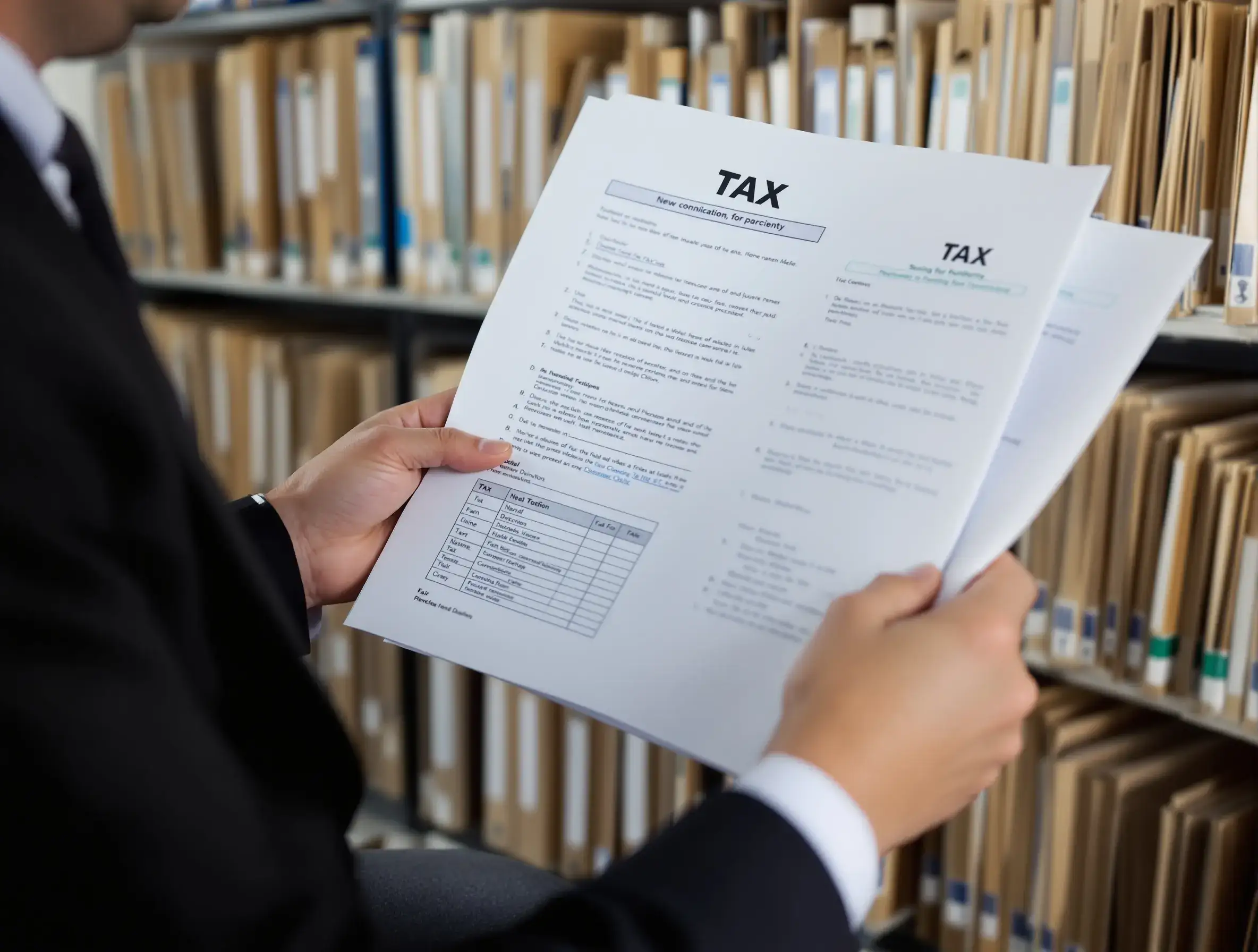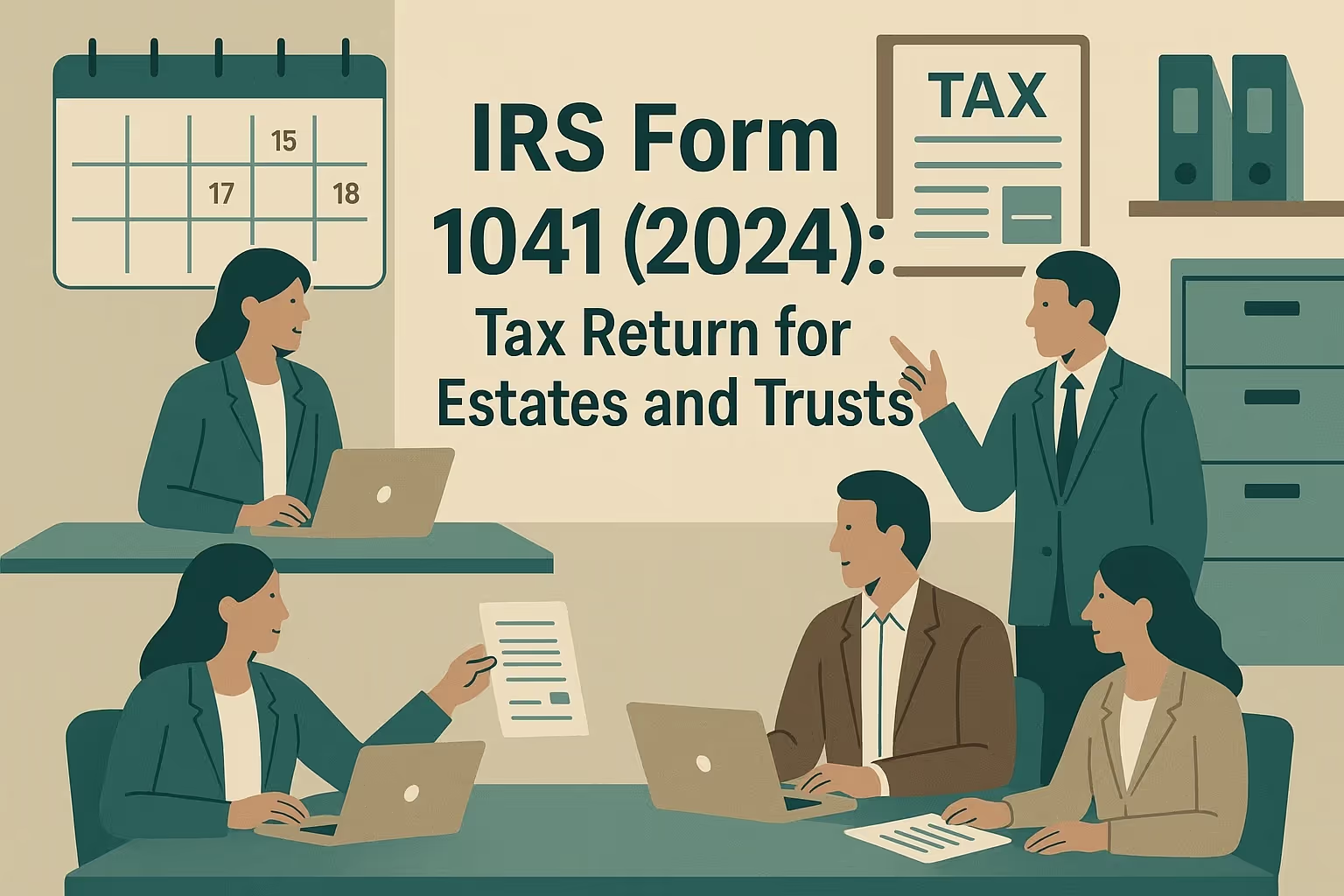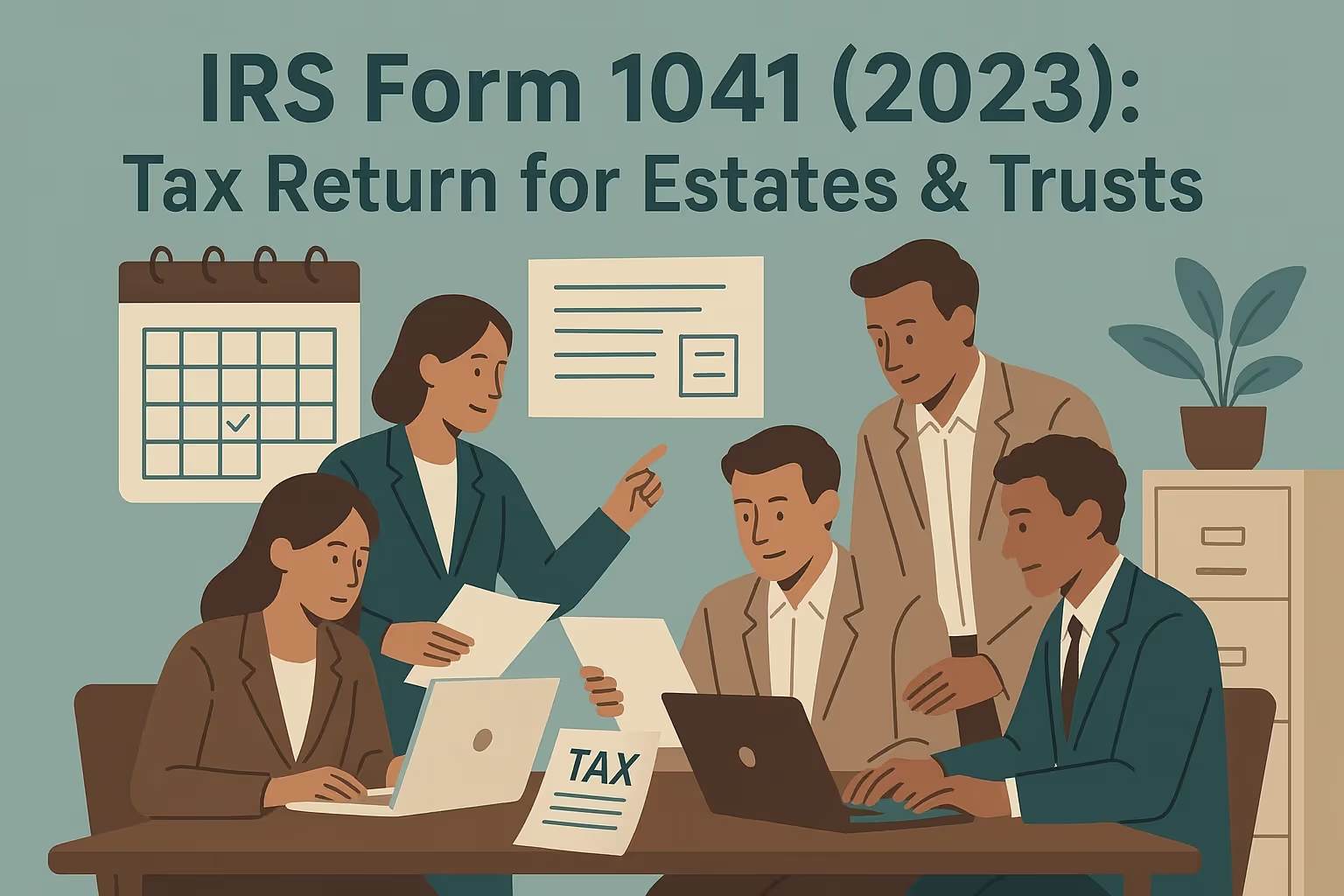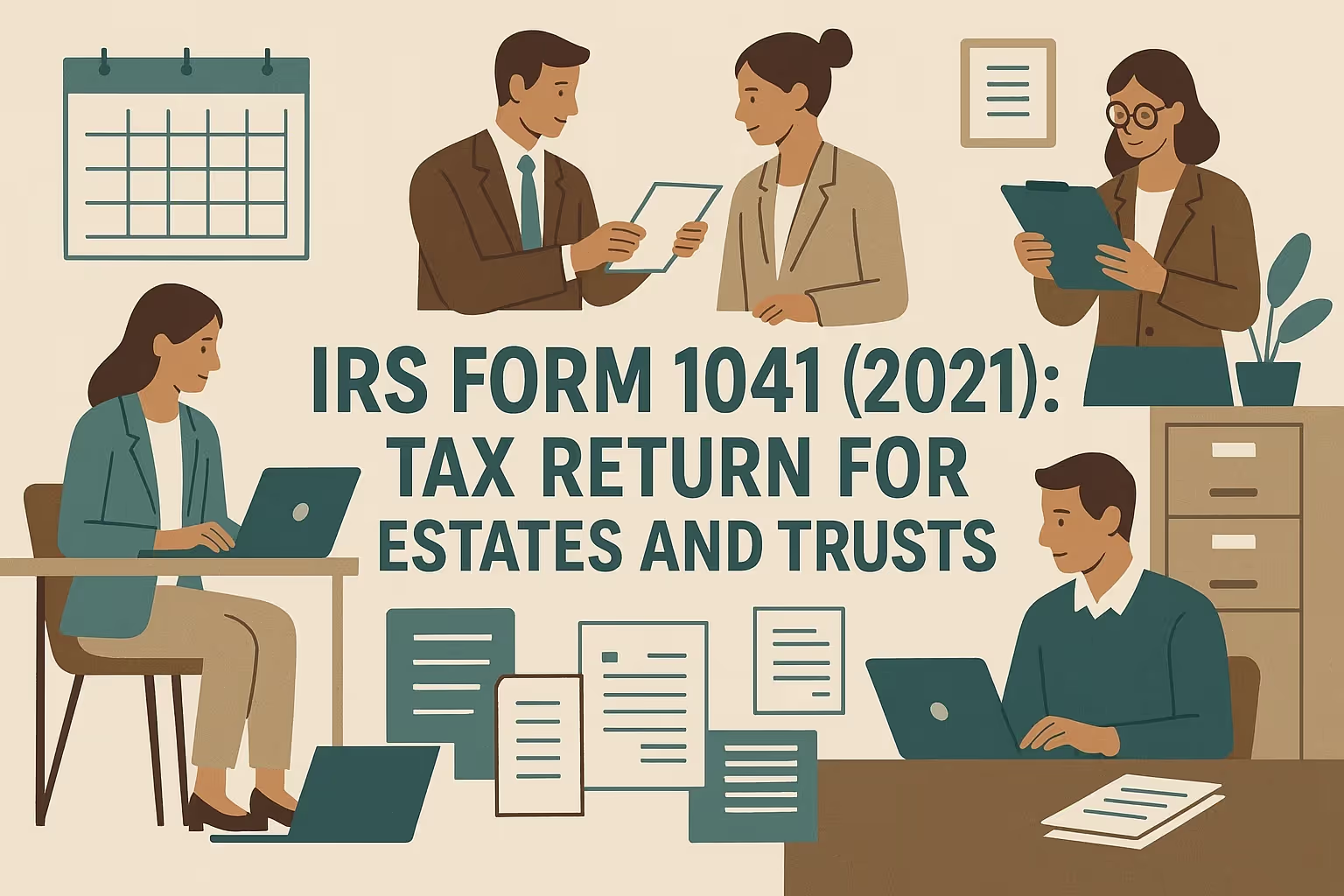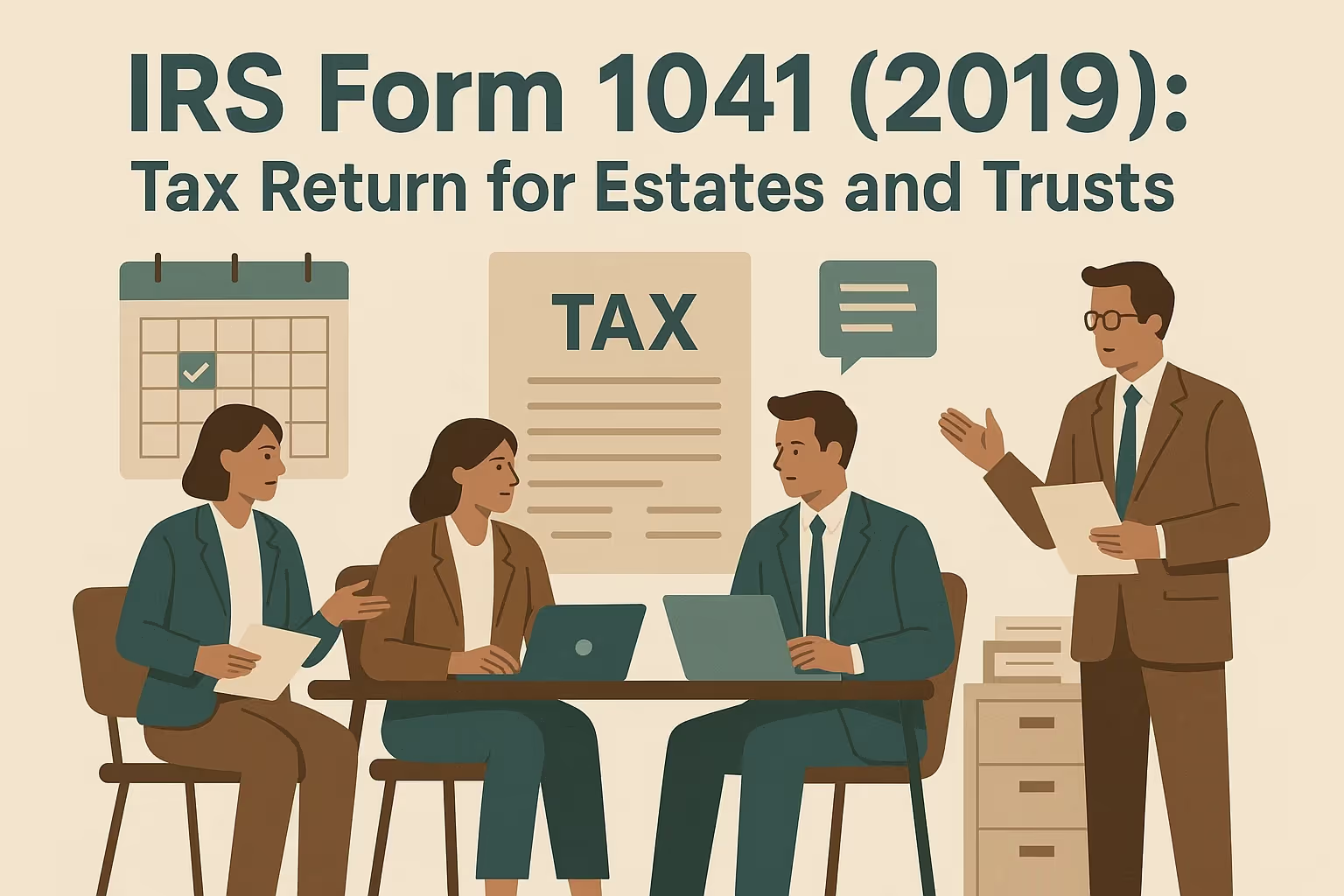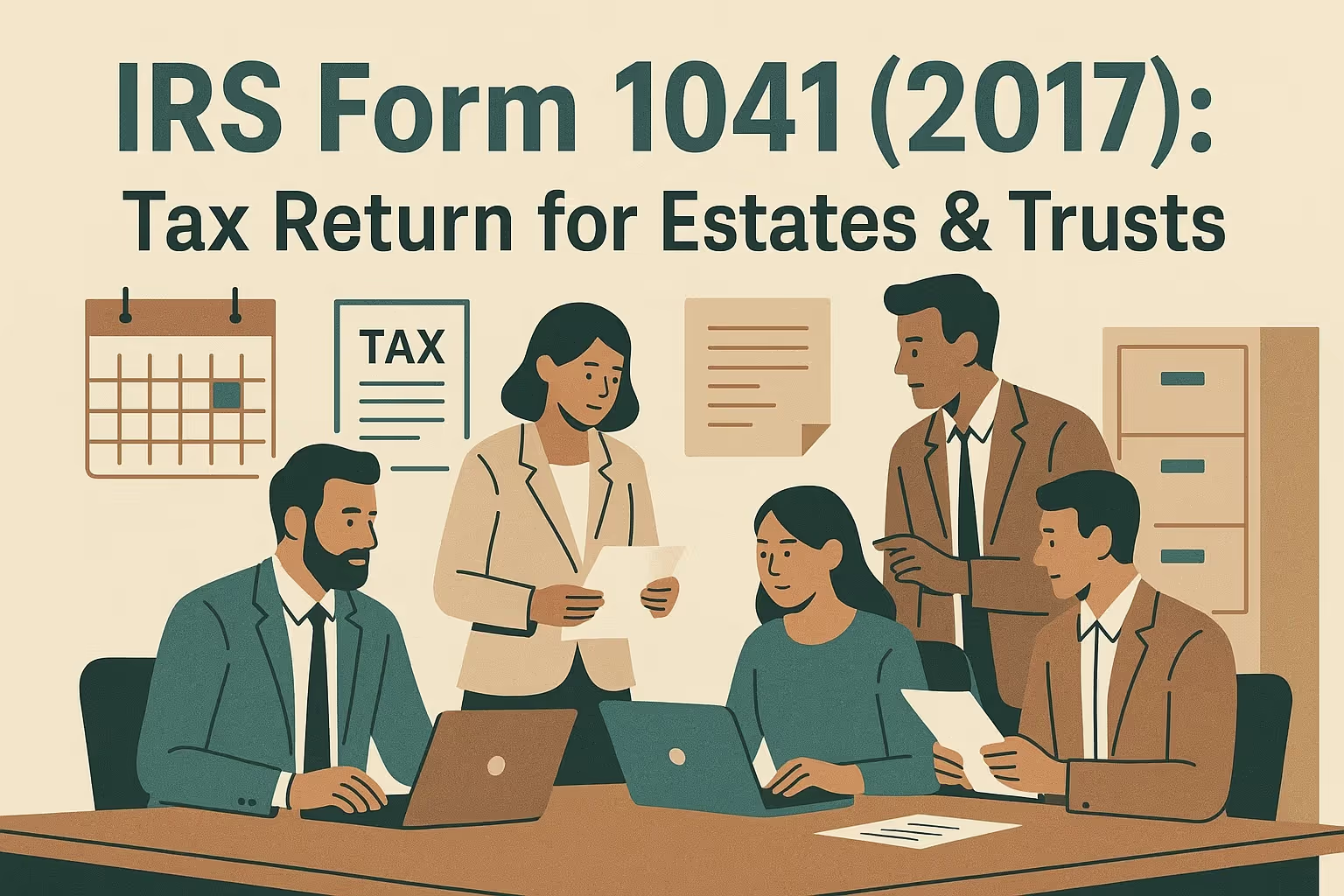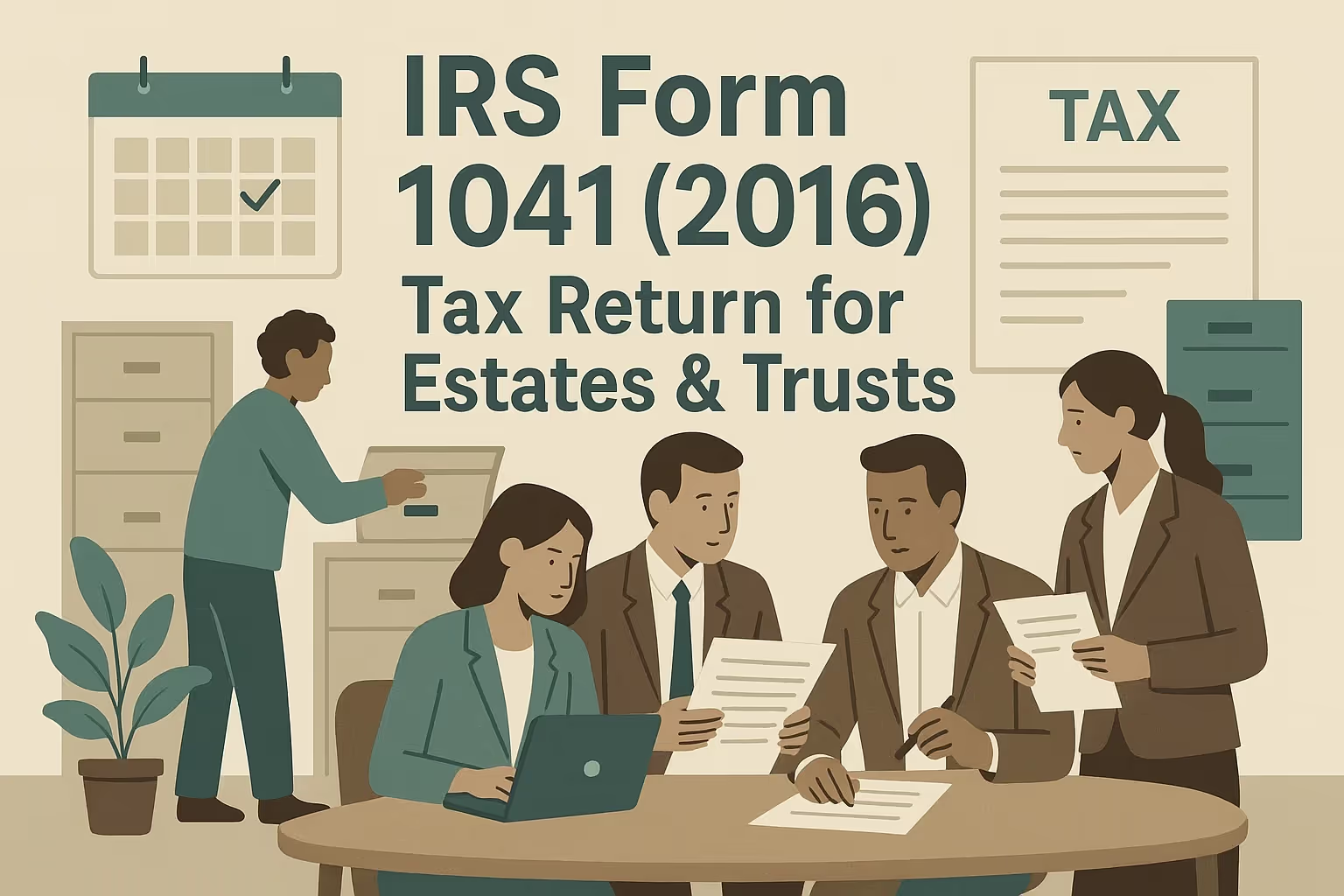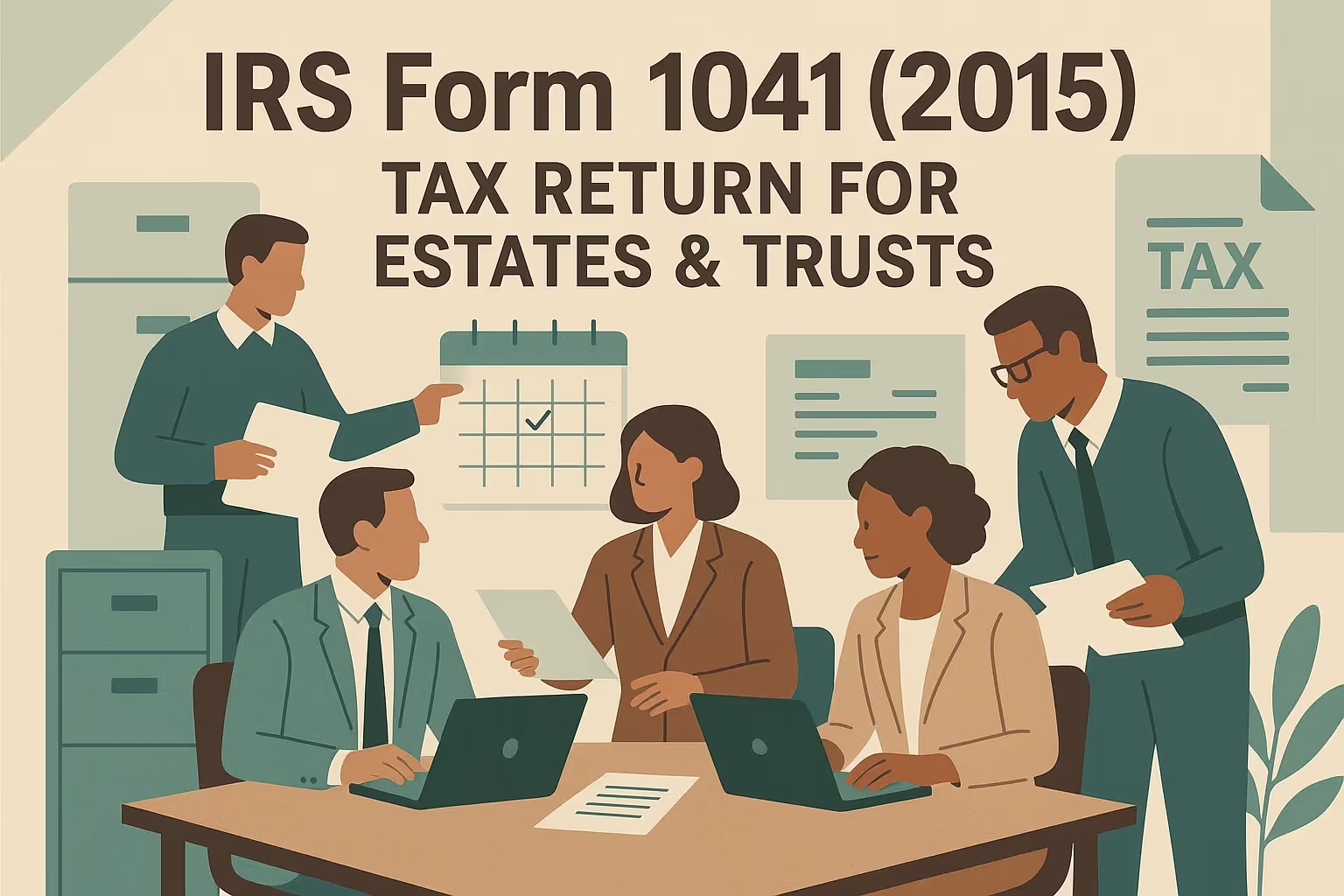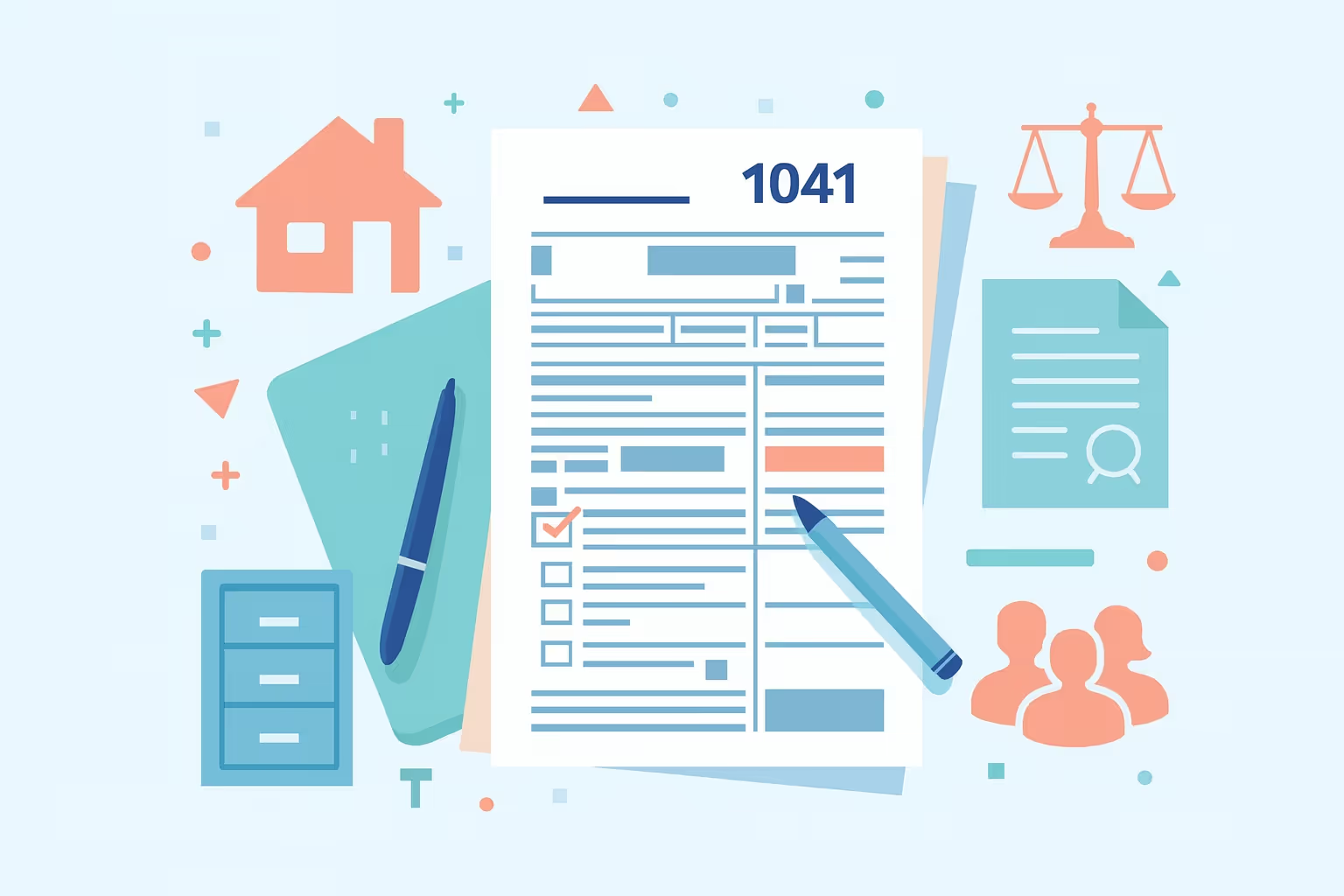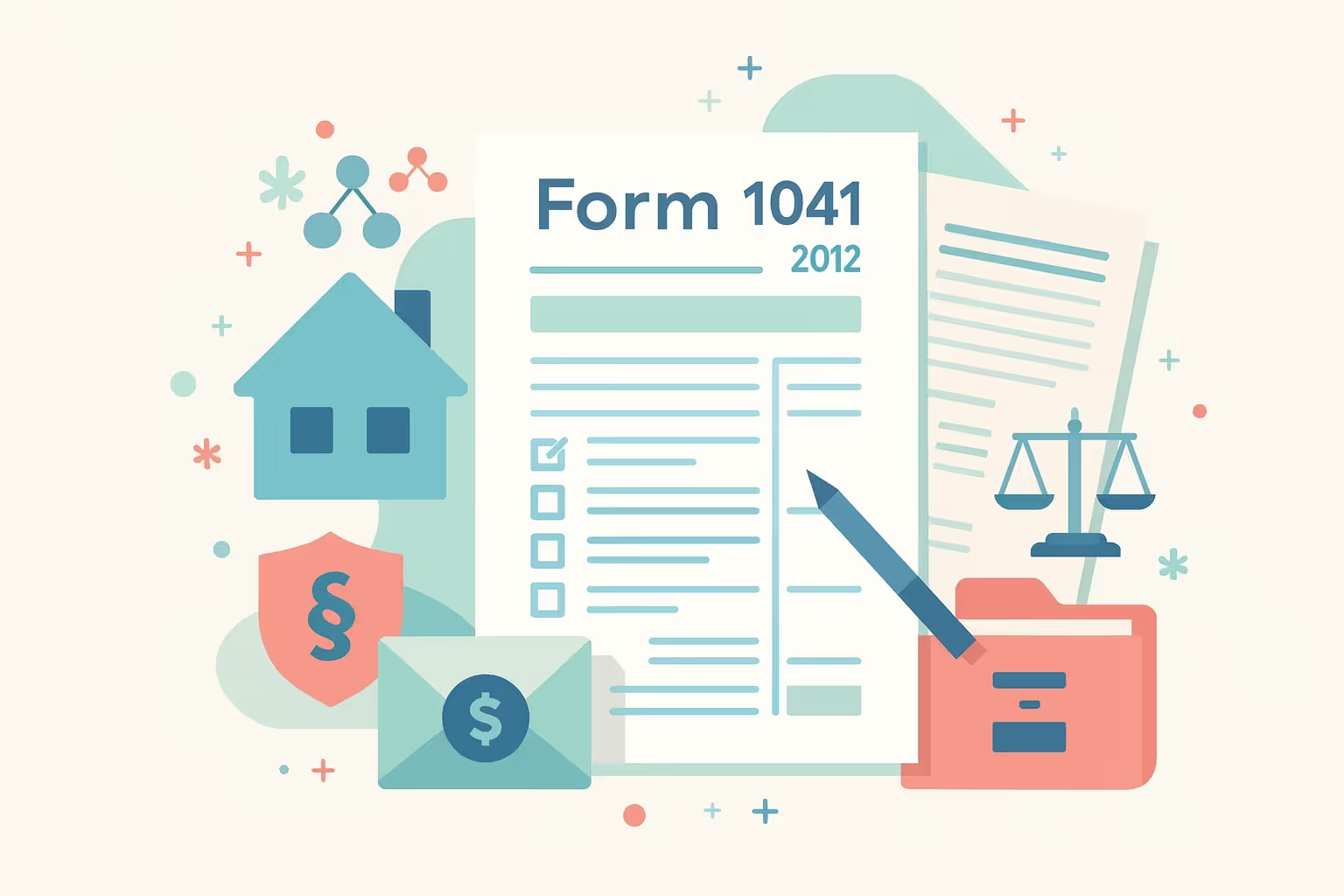IRS Form 1041 (2020): Income Tax Return for Estates and Trusts

What IRS Form 1041 (2020) Is For
IRS Form 1041 (2020) is the U.S. income tax return used by fiduciaries to report income, deductions, gains, losses, and credits for estates and trusts under the Internal Revenue Code. It allows the Internal Revenue Service to determine how much income is taxed at the entity level and how much is passed through to beneficiaries. Filing is required when an estate or trust has gross income of $600 or more, any taxable income, or a nonresident alien beneficiary.
This form also helps calculate the income distribution deduction and other required amounts. Fiduciaries must include the employer identification number, indicate the taxable year or calendar year, and disclose all assets, property, and income earned after a decedent’s death. The personal representative or trustee is responsible for ensuring all taxes are paid and the return is complete before filing.
When You’d Use Form 1041 for 2020 (Late or Amended Filing)
A fiduciary may need to file or amend the 2020 Form 1041 if IRS notices were received, unreported income or deductions were discovered, or beneficiary information on Schedule K-1 needs correction. It may also apply to claiming provisions under the CARES Act, such as NOL carrybacks or adjustments affecting the following year’s income.
Late filing often occurs when fiduciaries miss the April 15, 2021, deadline or are unaware of the requirement to file by this date. Refunds or tax payments generally must be made within three years of the due date or two years from the payment, whichever is later. Filing late can result in penalties and interest, so it is essential to calculate the full amount due and pay tax promptly to minimize additional charges.
Key Rules Specific to 2020
The 2020 tax year contained unique rules affecting estates and trusts:
- CARES Act Carrybacks: Net operating losses from 2018 through 2020 could be carried back five years to reduce prior taxable income.
- Increased Interest Deduction: The business interest deduction limit rose from 30% to 50% of adjusted taxable income.
- Repealed Loss Limitation: The excess business loss rule was temporarily suspended for tax years 2018 through 2020.
- Capital Gains Brackets: Estates and trusts faced rates of 0% up to $2,650, 15% from $2,650 to $13,150, and 20% above $13,150.
- SALT Cap: The $10,000 deduction limit for state and local taxes remained.
- Qualified Disability Trust Exemption: The exemption amount was $4,300.
- Deductible Expenses: Only legitimate administrative or funeral expenses paid from estate assets were deductible under the Internal Revenue Code.
For more resources on filing or understanding prior-year IRS forms, visit our guide on Form 1041 – Income Tax Return for Estates & Trusts.
Step-by-Step (High Level)
- Gather transcripts and accounts: Obtain IRS transcripts or account statements to verify reported income, total income, and deductions for the tax year.
- Use the correct form: Complete the 2020 version of Form 1041 and follow all IRS instructions for estates and trusts.
- Prepare required schedules: Include Schedule K-1 for beneficiaries, Schedule A for charitable deductions, Schedule D for capital gains, and Schedule J for the income distribution deduction.
- Submit supporting documents: Attach elections such as Section 645 or Form 8997 for Qualified Opportunity Funds, as well as statements for NOL carrybacks or grantor trust reporting.
- File and distribute: Mail or e-file the return if available, send Schedule K-1s to all beneficiaries, and retain copies for fiduciary records.
- Maintain documentation: Keep all pages, statements, and proof of payment for at least three years to show compliance with IRS requirements.
Learn more about federal tax filing through our IRS Form Help Center.
Common Mistakes and How to Avoid Them
- Late or inaccurate K-1s: File each beneficiary’s K-1 accurately and on time to avoid substantial penalties.
- Incorrect entity classification: Ensure the fiduciary accurately identifies the estate or trust type, such as a grantor trust, bankruptcy estate, or complex trust.
- Missing attachments: Include all required schedules and statements, such as NOL elections, to prevent delays or notices.
- Personal expenses claimed: Deduct only estate-related administrative expenses and exclude personal or beneficiary living costs.
- Failure to apply 2020 tax law changes: Fiduciaries must review all CARES Act adjustments and other 2020 income tax updates to ensure proper reporting.
- Improper estimated tax calculations: Use Form 2210 to verify estimated tax payments and avoid underpayment penalties.
Learn more about how to avoid business tax problems in our guide on How to File and Avoid Penalties.
What Happens After You File
The IRS usually processes e-filed returns within 21 days and paper returns in several weeks. Late or amended filings for the 2020 tax year may take longer to process. If any amount remains unpaid, penalties of 5% per month up to 25% of the tax bill apply, plus interest until the full amount is settled. Fiduciaries who cannot pay immediately may request a payment plan using Form 9465.
The IRS may issue notices if information is incomplete, if taxable income is incorrectly calculated, or if required schedules are missing. Fiduciaries should respond promptly to avoid additional fees. Keeping accurate account records helps demonstrate compliance and prevent disputes.
FAQs
Can I still e-file a 2020 Form 1041 in 2024?
No, the Internal Revenue Service only accepts e-file for the current year and the two prior years. For 2020 returns, fiduciaries must mail paper filings to the proper IRS processing center listed in the 2020 instructions.
What penalties apply for filing my 2020 Form 1041 late?
The failure-to-file penalty is 5% of unpaid tax per month up to a maximum of 25%. If more than 60 days late, a minimum fee of $435 applies. A 0.5% failure-to-pay penalty is also charged monthly until the full amount owed is paid.
How do I get transcripts for an estate or trust?
Fiduciaries can request transcripts by calling the IRS Business and Specialty Tax Line or submitting Form 4506-T, which requires the employer identification number and proper authorization. Transcripts show reported income, interest earned, payments, and deductions.
Is there still time to claim a refund for 2020?
Refunds are generally allowed within three years of the original due date or two years from the date of payment. Most 2020 refund claims have expired, though exceptions may apply if taxes were paid late or corrected in the following year.
Do I need to amend state returns if I file an amended federal Form 1041?
Yes, many states require amended fiduciary returns whenever a federal return is changed. Failing to do so can lead to interest, penalties, and mismatch notices.
Can I claim CARES Act benefits on a late-filed 2020 return?
Yes, fiduciaries may still claim deductions or credits under the CARES Act, including NOL carrybacks and expanded business interest deductions, provided the proper forms and statements are included.
What if the estate or trust no longer exists but needs to file for 2020?
The fiduciary or personal representative remains responsible for filing, even if the estate has closed. Mark the return as “Final Return,” report all income earned through termination, and issue Schedule K-1s to beneficiaries for distributed income.
For more resources on filing or understanding prior-year IRS forms, visit our Forms Hub.






